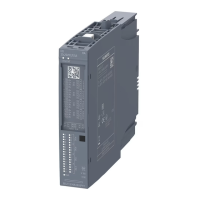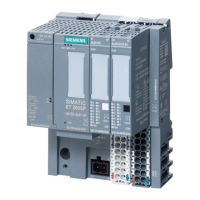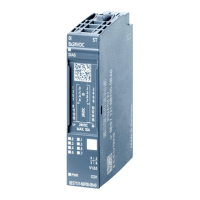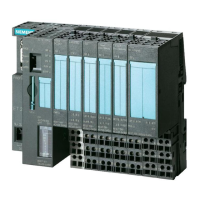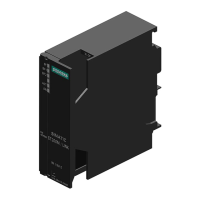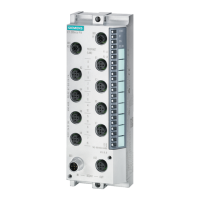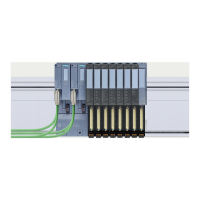8.1.2 HART
Denition
"HART" stands for "Highway Addressable Remote Transducer" and enables the digital
communication of several eld devices (sensor or transmitter or actuator) via a common data
bus.
The HART functionality also enables you to use the I/O module to exchange data with the
connected eld devices. The HART protocol is generally accepted as a standard protocol for
communication with intelligent eld devices: HART is a registered trademark of the HART
Communication Foundation (HCF), which owns all the rights to the HART protocol. You can nd
detailed information about HART in the HART specication.
8.1.3 HART protocol
Denition
The HART protocol describes the physical form of the transfer: transfer procedures, message
structure, data formats and commands.
WARNING
Special properties of the HART protocol
The HART protocol is not safety-related!
(FAIW-014)
Description
Each HART message frame sent from the analog module to the connected eld device (request
frame) and each HART message frame received from the eld device (response frame) has the
following basic structure:
PREAMBLE STRT ADDR COM BCNT STATUS DATA CHK
PREAMBLE: Bytes (0xFF) for synchronizing.
5 bytes
STRT: Start character (start delimiter)
ADDR: Address of the eld device (1-byte; short address or 5-byte; long address)
COM: HART command number
BCNT: Byte count, number of bytes to follow without checksum
STATUS: HART device status (1st and 2nd status byte). Only present for a response frame.
HART device status (Page 81)
HART function
8.1 Use
F-AI 8xI 2-/4-wire HART HA
76 Equipment Manual, 09/2021, A5E50557845-AA
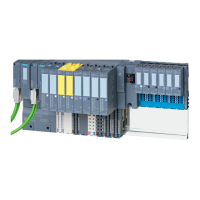
